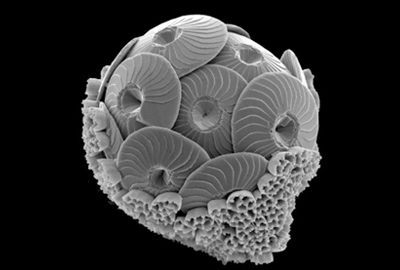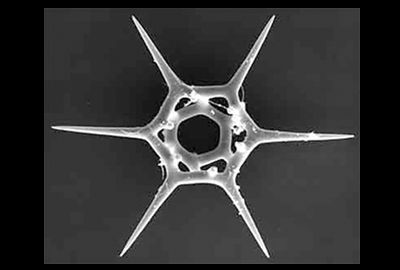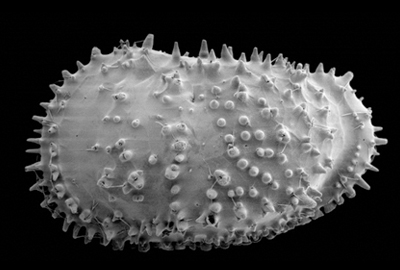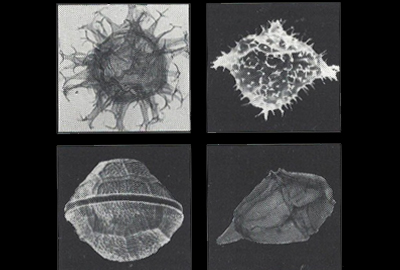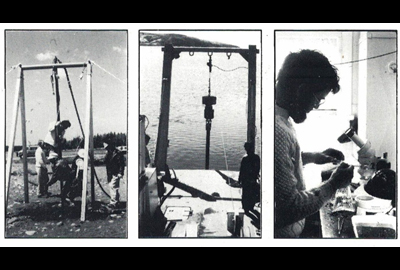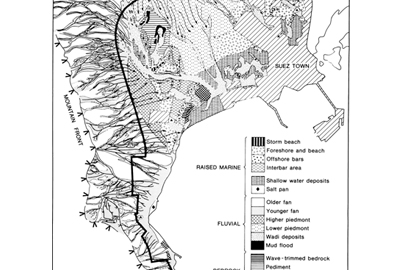Technical Information
Foraminifera
Foraminifera are unicellular, predominantly marine, benthic and planktic animals with calcareous and agglutinated (aranaceous) shells, averaging 0.1 - 1 mm in size, but may be larger than 5 mm. Because of their diversity, rapid evolution, abundance (they account for half of the known protozoa), and wide geographic distribution in neritic to abyssal sediments, they have traditionally been the most important microfossil group in stratigraphic palaeontology, especially in the petroleum industry. The benthonic species which live on the seafloor and evolved in the early Paleozoic, have been used since the early 1900's for age determinants and palaeoenvironmental information. Two benthic groups are recognised - the small benthics and the larger benthics - the latter by their size and complex interiors. The larger benthics which are routinely studied in thin-sections, have important Paleogene stratigraphic applications, and are used with agglutinated species for late Paleozoic biostratigraphic zonation. On continental slopes benthonic species have restricted distributions associated with each species tolerance to water depth, salinity, nutrient flux, dissolved oxygen and sediment pH. Bathyal species also exhibit considerable morphological variations as a consequence of evolutionary adaptation to the physical environment.

Benthonic species adaptations to specific niches have constrained their distribution amongst basins so that species occurrences are useful only in regional biostratigraphic zonation schemes. They have assumed greater importance in palaeoenvironmental interpretations and are the prime microfossil palaeodepth indicator. The planktic species which evolved in the mid-Mesozoic, occur in the water column to depths greater than 1000 m. Their distribution in modern oceans parallels that of the past, and their stratigraphic application is not subject to the ecological limitations which benthonics suffer. In Trinidad (West Indies) between 1945 and 1957, pioneer studies of planktonic foraminifera taxonomy and evolution were conducted in association with petroleum exploration. Most of the Cenozoic low latitude planktonic foraminiferal zonation was established in Trinidad during this time. This resulted in a worldwide ascendancy of planktic biostratigraphy, ushering in modern micropalaeontological studies. The planktonic foraminiferal biostratigraphic scheme have attained zonal and subzonal resolutions of less than 1 my in Cretaceous and 200,000 years in Tertiary. (species of planktonic useful in paleoclimate)
About Us
We provide comprehensive geological service packages to assist hydrocarbon exploration and development throughout the Caribbean.
© All Rights Reserved.
Our Contacts
Administration Building
113 Fredrick Settlement
Old Southern Main Road
Caroni, Trinidad W.I.
+868-645-9443
+868-620-9384

